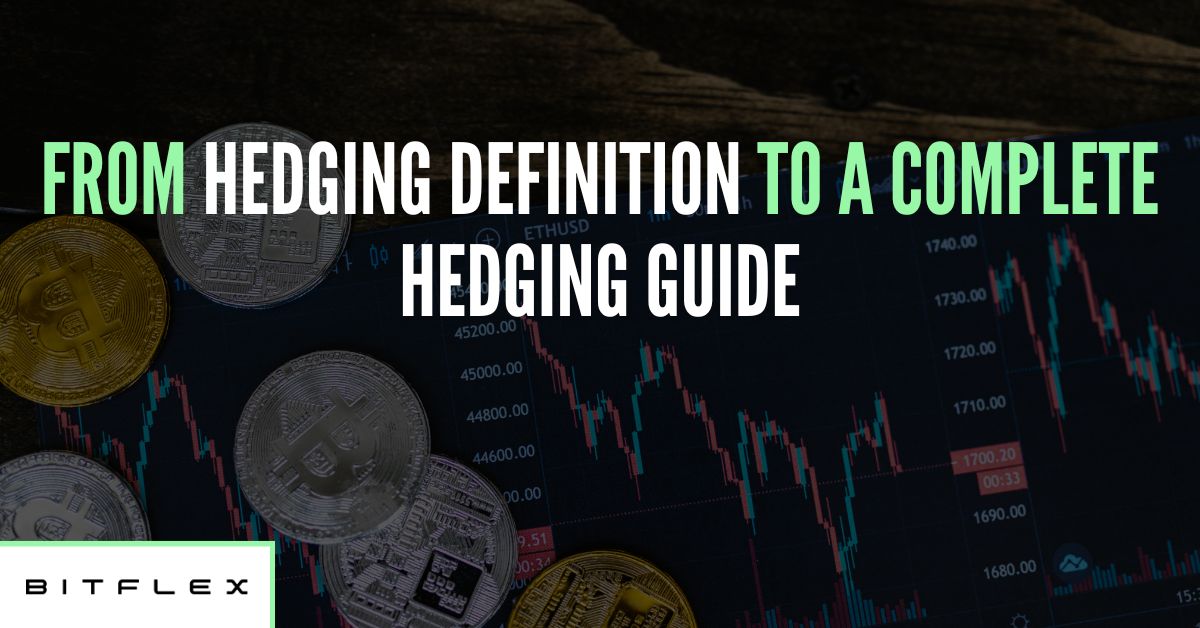Since crypto investors use various strategies to leverage their portfolios and critical investments, churning profits without proper hedging can be risky. The hedging definition has roots in traditional finance. And now, it is a vital part of the crypto community and crypto day traders. Hedging merely minimizes the risks associated with a specific class of assets. To crack the hedging definition and how to implement it as a beginner, we need to know the concept properly.
What is the Hedge?
Hedging is a process to minimize risks in volatile and uncertain market situations. It is an exemplary process for investors to understand the market in the long run. And with this approach rightly applied, we minimize risks to the maximum. Hedging is, therefore, a risk management strategy. It is to offset losses for your invested funds and assets. And this happens by taking an opposite position in a current running marker trend.

With the help of hedging, you can offset the chances of haphazard market events. And the ones that can downturn the market altogether. But another point of using hedging is to limit gains that are present in the market. Since you are safeguarding yourself against losses, there are chances of reducing profits and ultimate gains. Suppose any condition meets the requirement, and the market moves in the forecasted hedged position. The trade stops and ends. This market trigger indicates the use of hedging by expert investors and crypto intraday traders.
How to Implement a Pivotal Hedging Strategy?
Since cryptocurrencies reach all-time highs and lows in the dynamic and ever-changing crypto market, it is, therefore, essential to notice that there are various hedging strategies. There are technical-level hedging strategies to implement if it is a bull run or bear market.
Since bullish markets are more prone to bullish trends, we see optimism in the crypto markets. Hence, we often see investors tempted to make irrational decisions in trading. Such a scenario mostly happens to new traders.
Traders get into a HODL mentality and advocate holding on to investments. Hence, we cannot rely on long-time holding and one asset to give us returns. Diversification is a crucial strategy to hedge and minimize risks.
Staking and Yield Farming
Since Defi has more prominence, a stablecoin annexation with significant coins and tokens, Defi now offers to stake and earning by sticking your assets locked in for a specific period. Lucrative yield farming opportunities are now famous in crypto-centralized exchanges. With proper staking and yield farming, many traders lock their assets for sure returns. Hence, staking and yield farming is another hedging and anchoring mechanism to cope with the risks and volatility.

Technical Analysis for On-Chain Networks
Running an on-chain technical analysis is a cumbersome task for beginners and new traders. For conducting a technical analysis, a trader needs to learn the basics of the market and adapt to the level of skill and knowledge. Countless learn-to-trade platforms offer beginner courses for free. They help us know the key indicators linked to trading. Indicators like the Relative Strength Index (RSI), Moving Averages, and candlestick patterns, are some fundamental vital indicators. Such key indicators are necessary to add up to the technical analysis learning journey.
Some other tools such as Whale Accumulation and Funding Rates, demonstrate on-chain activity. On-chain analysis helps traders analyze whale activities and when to buy the dip. Whale accumulation analysis involves observing transaction values and block sizes. Suppose a block size is more extensive and has a higher transaction value. Then it is a whale entry into the market.
Amid the Coronavirus outbreak, we saw significant changes in the crypto market sphere, and traders were expecting a sell-off. Many traders also use fair value analysis to hedge against changes in the market.
Using Wallets and Safeguarding Assets
An important aspect of crypto is related to how one can store them. The preferable one is keeping it in cold storage wallet. For safekeeping assets and cryptocurrencies, it is preferable to store them in cold wallets. Cold wallets are better than hot wallets. Specific hot wallets such as Metamask are not preferable to store crypto.
Investors store their assets just like ETH with smart contracts. Still, we must safely keep our assets and protect our wallets against unlawful attempts and hacks. For this, there are certain insurance coverages available such as Nexus Mutual. Nexus Mutual provides insurance in Defi projects, offering hedging and protection against hacking attempts and losses you might bear. They sell their cover against exchange hacks or potential bugs in smart contracts.
Building a Crypto Portfolio
One of the salient strategies among crypto traders and investors is to diversify their portfolios. As the famous adage says, do not put all eggs in one basket. So, the same rule applies to asset buying and selling. You should invest in multiple crypto altcoins and indulge in technical analysis as a trader. Researching the project can help ascertain the losses and growth potential of the asset.
Your portfolio construction can reduce hedging costs. Furthermore, it can help your basket of some valuable projects for holding for the long term. For adding beneficial projects to your portfolio, look for a higher market capitalization for each portfolio. Adding Bitcoin and Ethereum to your portfolio is advisable as they are better in liquidity. Such projects are considered less risky than new ones, which do not have much liquidity.
Portfolio construction is related to each trader and investor’s risk appetite and interest. Some cannot bear many losses and prefer selling off quickly. It solely depends on how the market moves and what prevailing sentiment. However, historical data shows that when you hold onto some top-notch projects, there are chances for profit maximization.
Buying Options to Hedge Against Market Uncertainties
Buyers can buy or sell an asset at a predetermined price thanks to options, which are derivative contracts. Put options can be a useful technique to reduce the risk for investors who hold long positions in cryptocurrencies. The right to sell an asset at a predetermined price and within a predetermined time is provided by put options. Thus, it enables investors to hedge their portfolios in a market downturn by selling short.
On the other hand, call options are a sort of long bet because they provide the chance to purchase an asset at a specific price in the future. Holding call options might enable an investor to re-enter the market at a particular price if they decide to take profits early in the event of a slump and feel that the market will eventually rise. Options are a sophisticated product that experienced traders and investors should only use, but they can provide users with significant gains.
In conclusion, investment in cryptocurrencies can provide enormous profits. The historical upside potential of cryptocurrencies has been unsurpassed by any other global asset. But more potential profit entails more significant risk.








